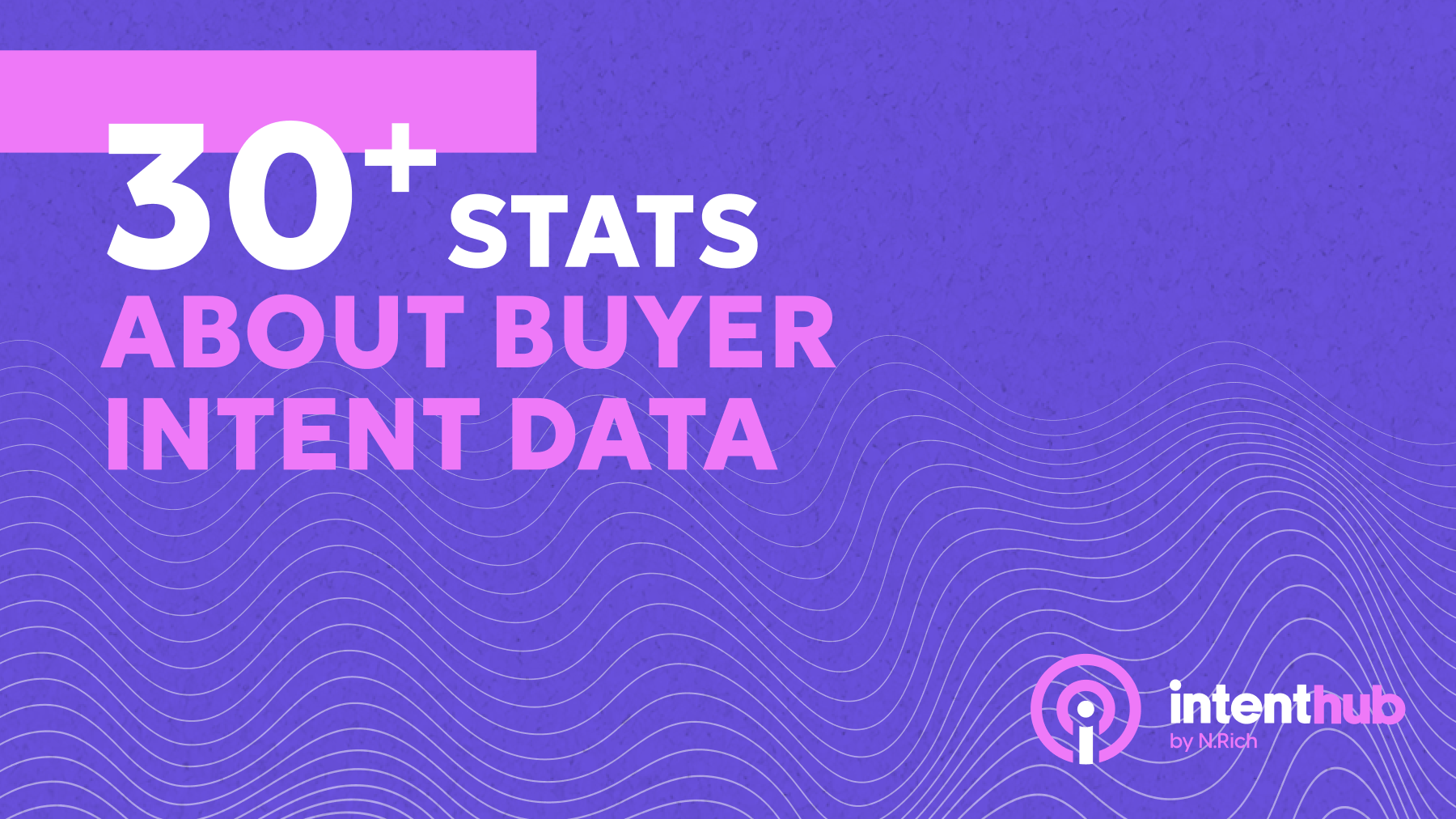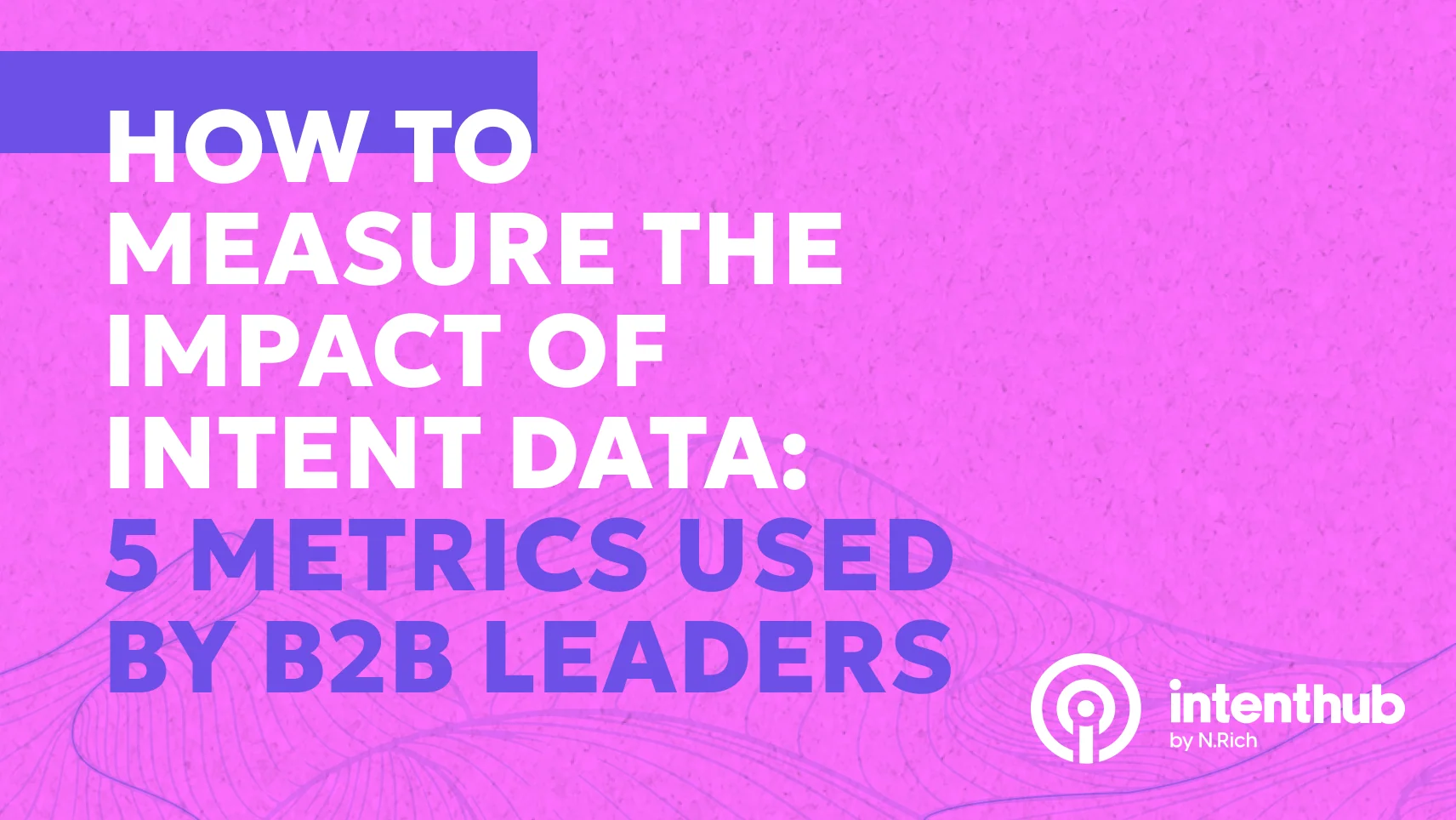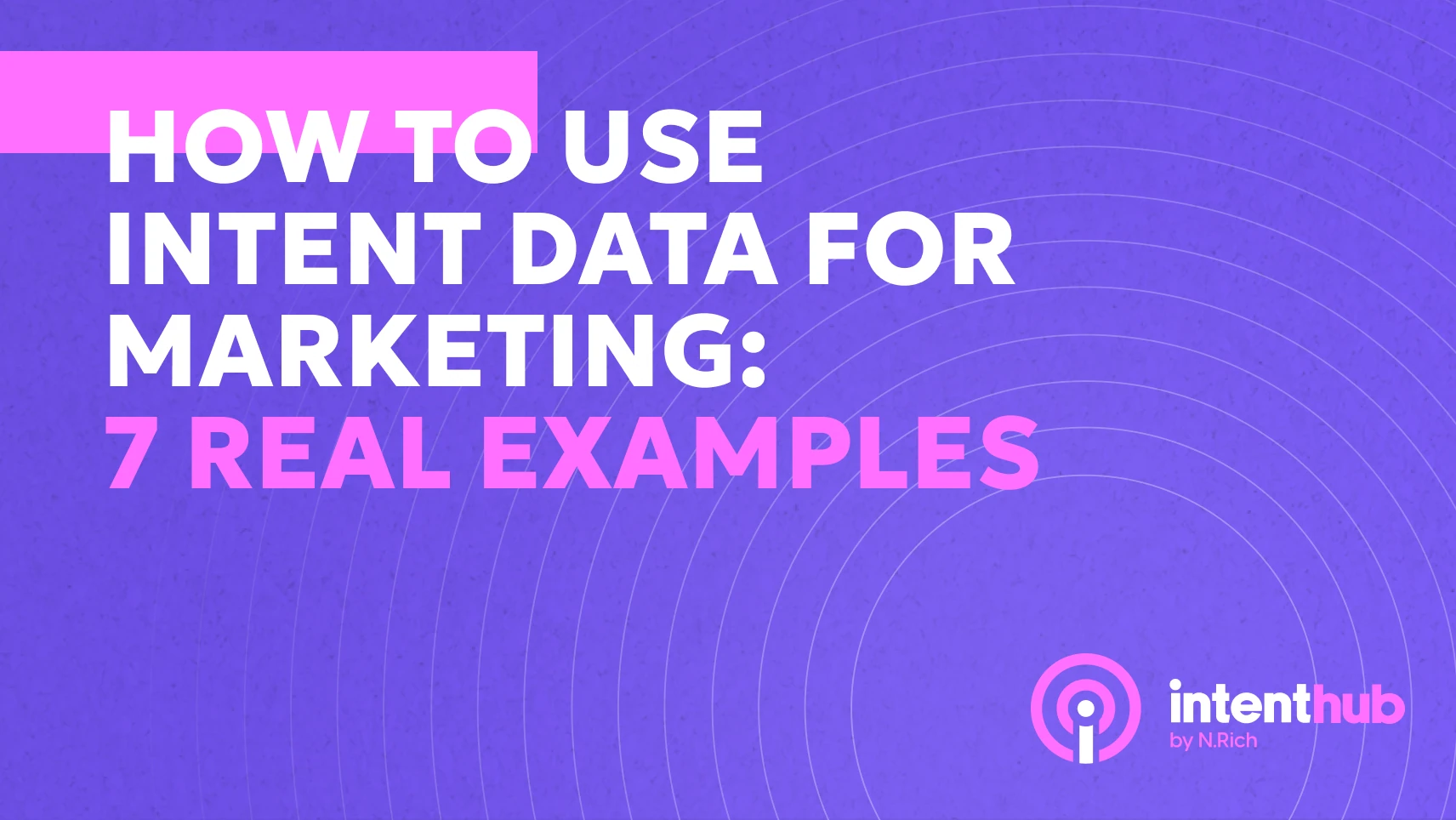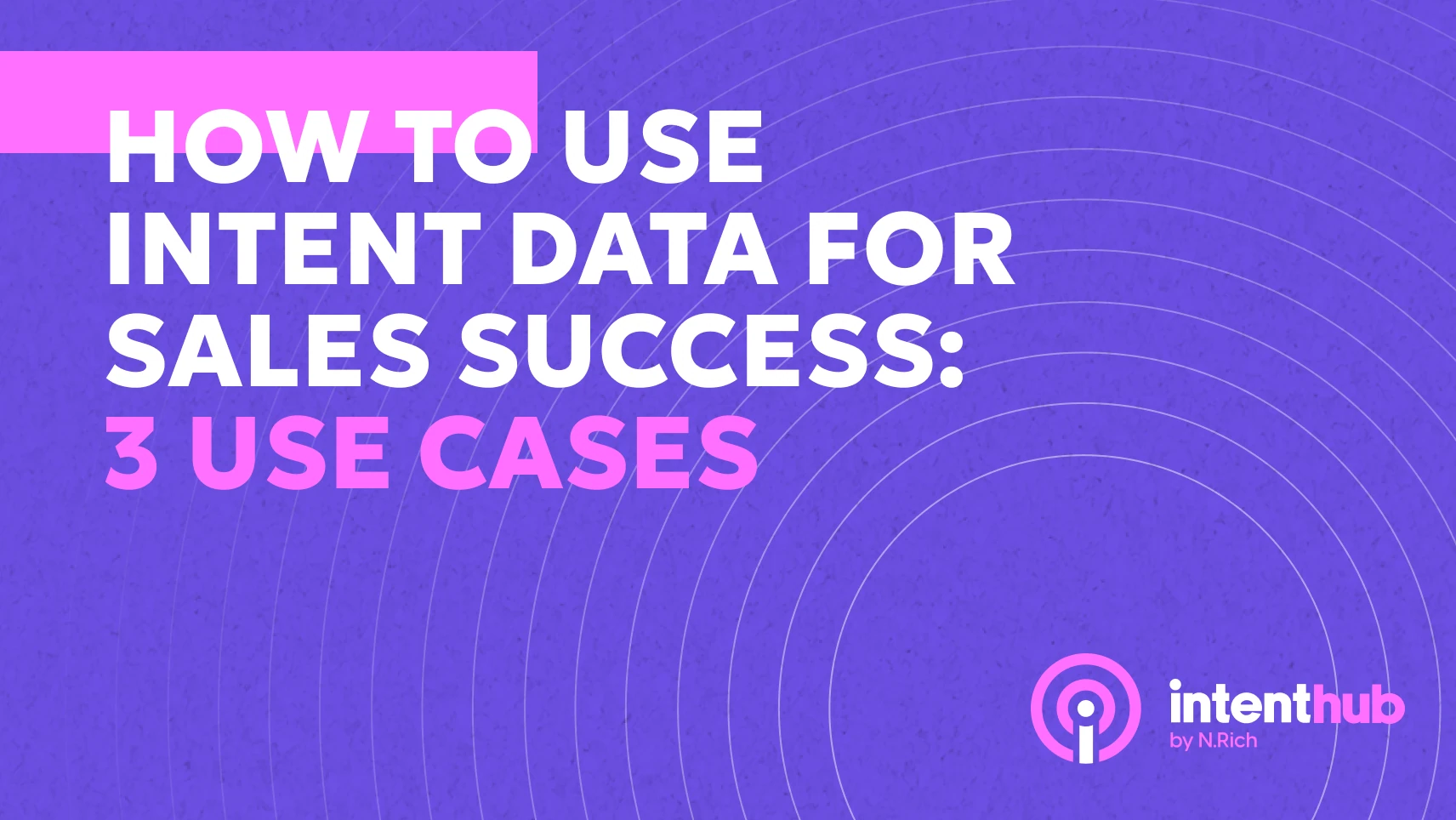
You know that feeling you get when you stumble upon an incredible sales opportunity that's been hiding in plain sight all along? What if you could replicate that feeling and capitalize on those hidden opportunities consistently?
That's precisely what intent data can do for your sales strategy. When used effectively, it helps you identify, engage, and close deals with prospects who are ready to buy.
In this article, we will walk you through the strategies and tactics relying on intent data that top-performing sales teams employ.
What is Intent Data and Why Does It Matter for Sales?
Intent data is the combination of signals by your prospects that indicate that they are likely ready to buy.
Imagine this scenario:
You are selling project management software and you've just discovered that a key decision-maker at a potential client's company has been researching various project management software options, reading blogs and reviews, downloading brochures and product comparisons, and engaging with social media posts on the topic.
It could clearly be a huge opportunity for your business.
With intent data, you can identify such opportunities, leverage all the information available to target your outreach and tailor the pitch accordingly. This improves your likelihood of closing a deal before competitors do.
Different Types of Intent Data
Intent data can be broadly classified into three categories:
- First-party intent data
- Second-party intent data
- Third-party intent data
First-party Intent Data
First-party intent data is the information collected and analyzed directly from your company's own digital assets that provide access to analytics data.
For instance, if you notice that a prospect has visited your pricing page multiple times and downloaded a product comparison sheet, it's a strong signal that they're seriously considering your solution.
Examples of first-party intent data:
- Website visits
- Ad clicks and impressions
- Comments and likes on your social media pages
Second-party Intent Data
Second-party intent data is the information obtained from another company's digital properties through mutually beneficial data-sharing arrangements.
In these agreements, two companies exchange their first-party data, granting both parties valuable insights into each other's customers.
Examples of second-party intent data providers:
- G2 Buyer Intent
- TrustRadius Buyer Intent
- LinkedIn Buyer Intent
Third-party Intent Data
Third-party intent data is the information collected by external data providers who aggregate and analyze data from various sources across the internet. This includes websites, social media platforms, forums, and other online sources.
To maximize the effectiveness of third-party intent data, it is important to choose a trustworthy provider with a demonstrated history of delivering accurate, reliable information.
One of the tips would be to integrate third-party data with your first-party information that might reveal new markets or niche segments you didn’t consider, presenting new sales opportunities and facilitating growth.
Examples of third-party intent data providers:
- IntentHub
- Bombora
- Demandbase
Let’s look at the use cases for different types of intent data for the sales team.
Use Case 1. Identify High-Potential Target Accounts
Picture this scenario: Jane, a sales rep for a software company, spends countless hours reaching out to a seemingly endless list of leads. Many of them appear promising on the surface, but after numerous calls and emails, she's left with a handful of lukewarm responses and a discouraging lack of progress.
By tapping into the rich insights provided by intent data though, Jane can transform her approach to lead qualification. She can now focus her attention on the prospects who are actively engaging with her company's content, exploring her competitors' offerings, and displaying clear signs of purchase intent.
Here’s how:
Monitor prospect engagement
Track prospects' interactions with your content, such as website visits, content downloads, and social media engagement. These insights can help you determine a prospect's position in their buyer journey.
Gauge the buyer's journey milestones
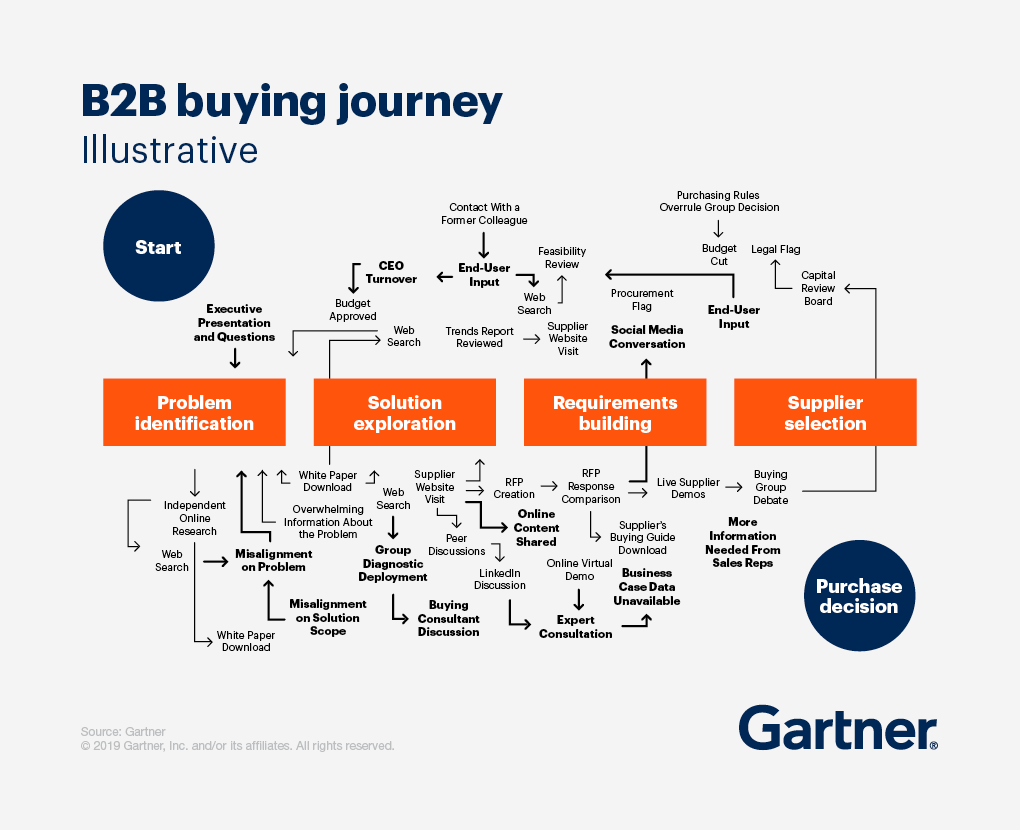
Source: Gartner
For instance, a prospect who has visited your product pages and downloaded case studies is closer to buying than someone who has merely skimmed a few blog posts.
Focusing on prospects who are further along in their buyer's journey empowers your sales team to target their efforts more effectively.
Decode interactions with competitors
Expose prospects who are flirting with your competitors' content or exploring alternative solutions.
By recognizing these accounts, your sales team can craft tailored outreach that address the prospect's concerns and showcase your product's strengths.
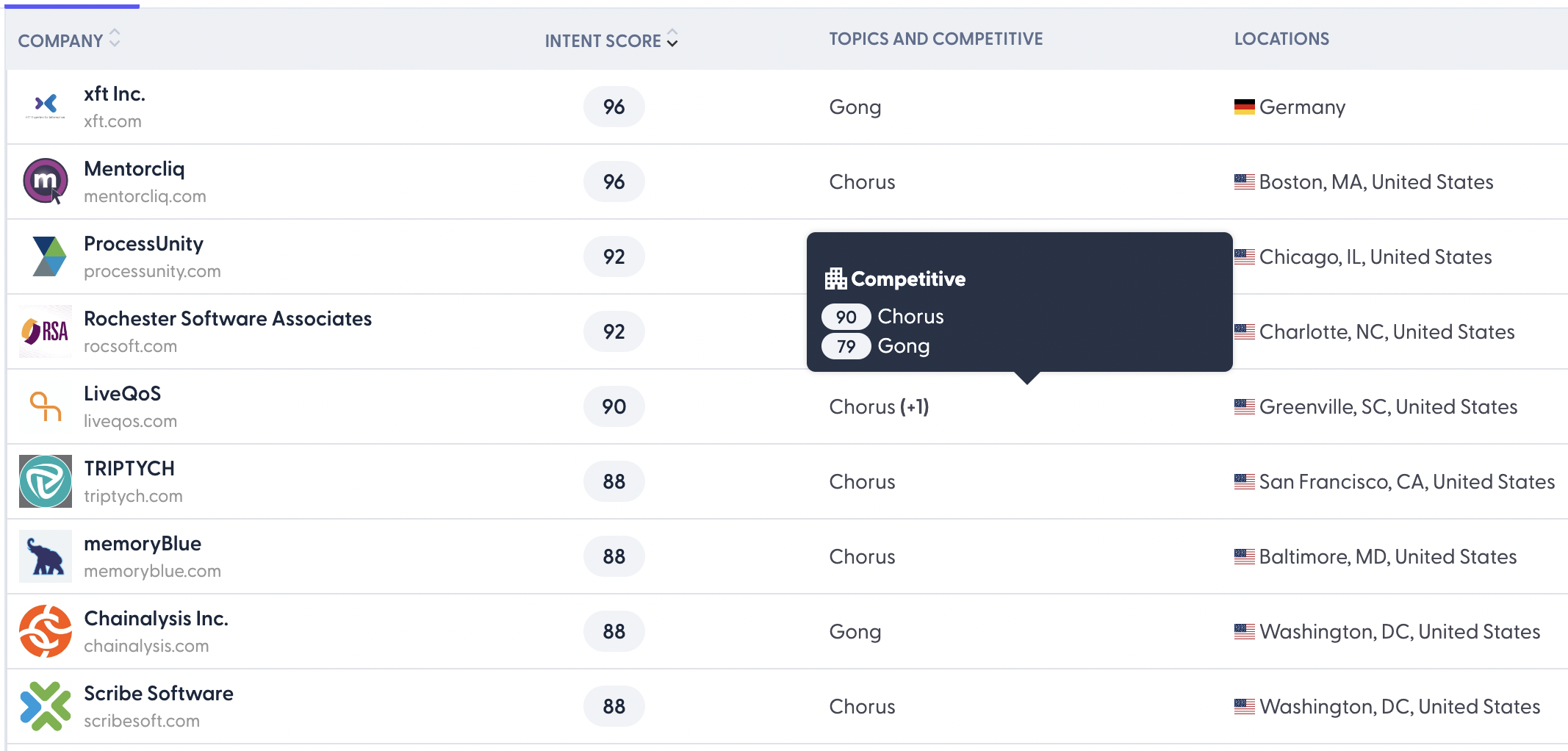
Use Case 2. Set Up Notifications About High-Intent Accounts
In the Use Case 1, we saw how you can identify a group of accounts and plan a campaign to cover the entire group. But there’s another way to use intent data for your daily sales efforts: set up instant notifications about surging accounts.
Surging account is a company demonstrating growing buyer intent towards your product. If you see that someone from company X visited your website (especially high-intent pages) 20 times per week and in the previous week you had only 3 visits, it means that their intent is surging and they’ve entered the vendor selection stage.
You want to be notified of those changes immediately.
Intent data tools have capabilities that will allow your sales team to get notified about accounts with surging intent:
Browser notifications
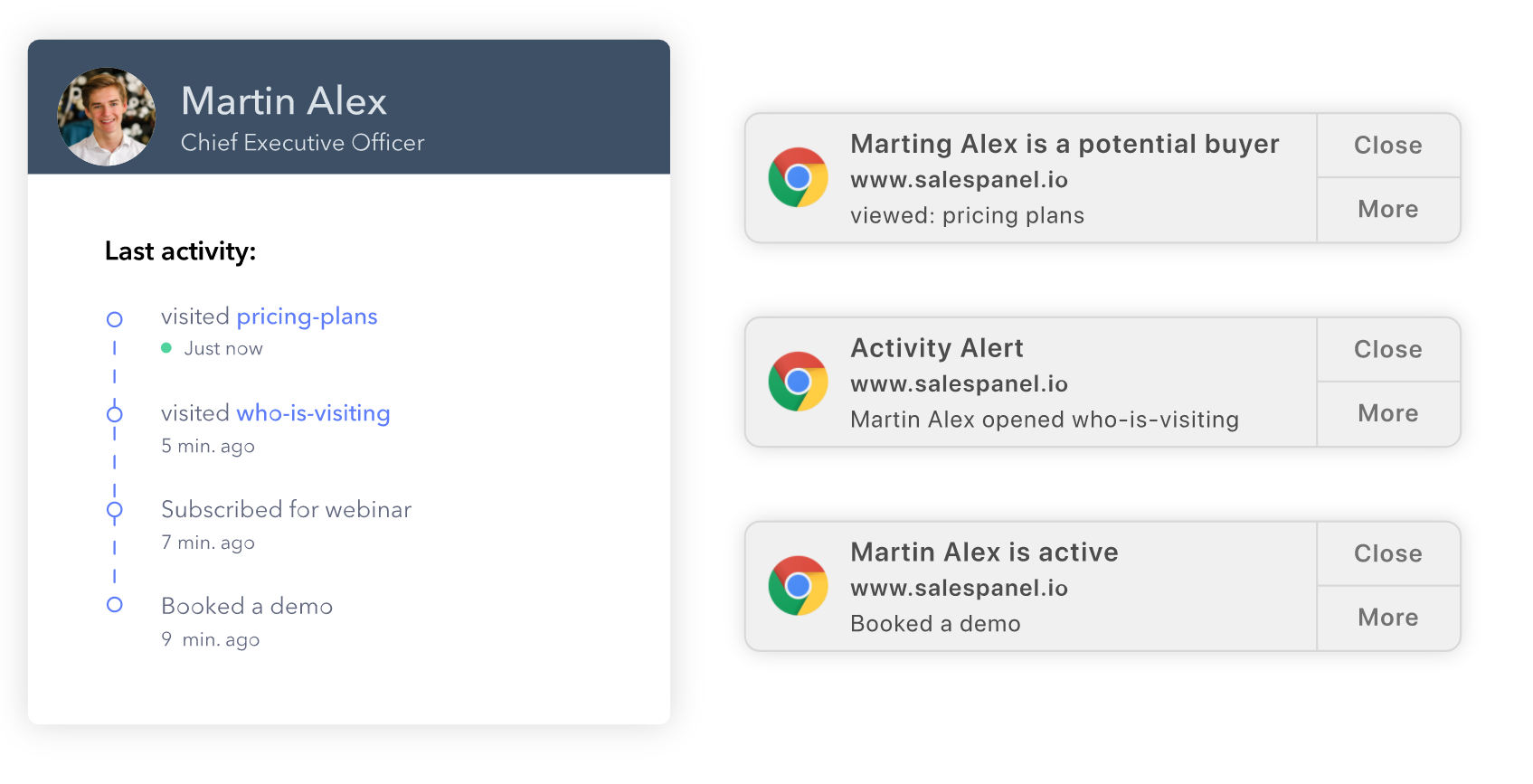
Source: Salespanel
Slack notifications
.jpg?width=1080&height=720&name=PRODUCT%20RELATED%20SLACK%20INTEGRATION-%20alerts%20(1).jpg)
Source: N.Rich
Email notifications
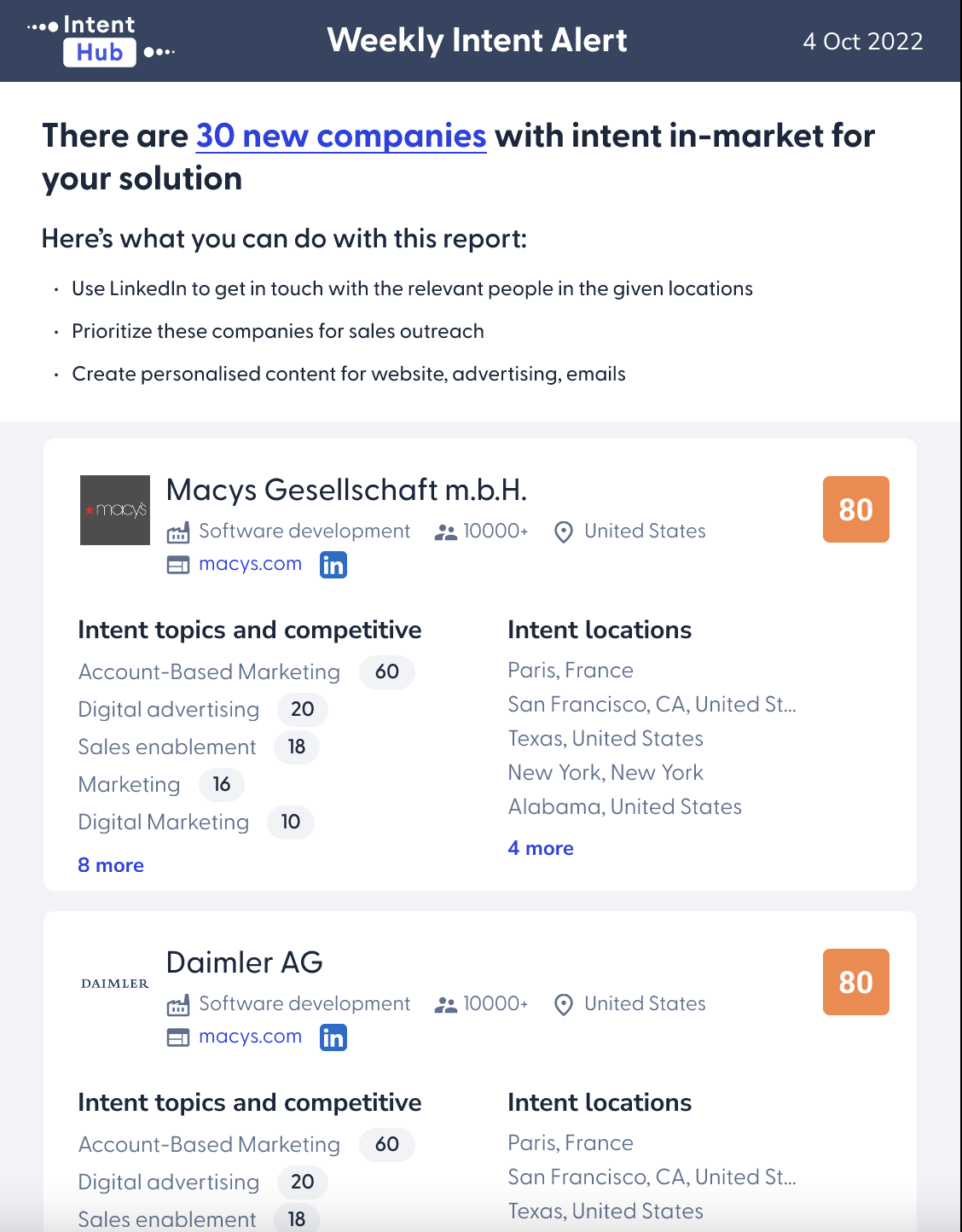
Source: IntentHub
Use Case 3. Personalize Your Outreach
After you identified an account to reach out to, it’s time to customize your outreach.
To stand out and engage your audience, it's essential to tailor your message to the specific needs and interests of each individual lead. Address the specific pain points in your sales messaging to demonstrate a genuine understanding of the prospects’ needs.
Example: Clearbit’s free visitor identification tool can tell you which companies are visiting a blog post covering a specific topic, so that you could refer to this topic in your outreach.
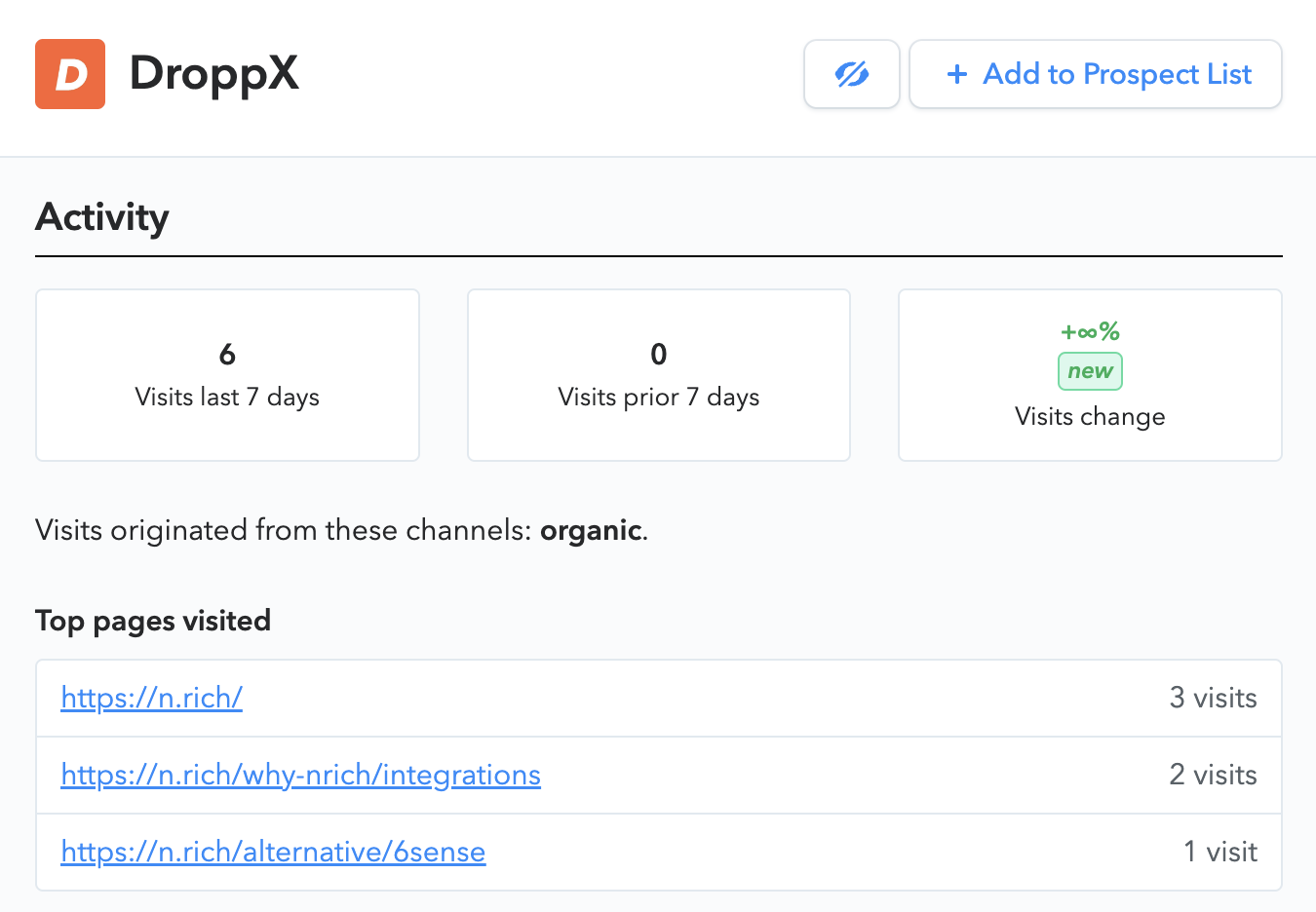
Source: Clearbit
This company visited the n.rich website and checked the Integrations page and the competitor comparison page. A sales rep can use this info to reach out with a case study for a CRM integration and a competitor comparison sheet.
Choosing An Intent Data Provider For Sales
If you’re choosing an intent data tool for your sales team, here’s the checklist of parameters to look at:
1. Types of data provided. Do you have enough high-quality traffic on your website already? Then a visitor identification tool will be your first choice. Do you want to use other data sources to identify and convert competitor prospects? Then look at platforms like G2 or IntentHub.Read this overview of buyer intent data providers to build your own tech stack.
2. Alerts and notifications. Depending on how you want to receive alerts about surging accounts, make sure the product you’re looking at provides this capability.
3. CRM integrations. Make sure the product you’re evaluating integrates with your CRM to push intent scores and engagement data.
4. Ability to provide intent location insights. As intent data platforms provide insights only at the account level, having additional data on the location of the intent signal will help narrow down your search for the best person to reach out to.
5. Data quality in your region. Typically, the origin of the company will determine which region they specialize in. Don’t hesitate to ask the provider which region they’re focused on primarily in terms of data quality.
Topics

